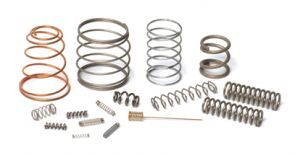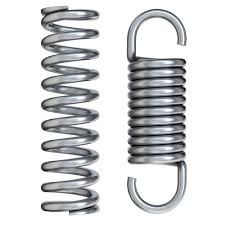
Titanium Coil Spring
Get Price Quote
Payment for orders can be done by offline or online modes, according to suitability of clients. We will make sure any method agreed on by you and the company will be safe and secure. We keep the finished assortment of products in highly developed and spacious space. This helps us in keeping products secure and sorted.

Custom Coil Springs
Get Price Quote
From writing pens to railroad cars, compression springs function to fill a variety of project needs, from the everyday to the unique. They are designed to create resistance to a compressive force. They are usually coiled at a constant diameter, though they can be coiled in other needed forms such as conical, concave (barrel), convex (hourglass), or various combinations of these. Pavithra Toolings can design and manufacture a compression spring to your specifications.
Best Deals from Industrial Springs

Clutch Springs
Get Price Quote
Our team of experts is capable of entertaining the voluminous orders in shortest time possible. As a trusted name, we conduct different quality tests at all stages to make sure that our offered range is defect free. We offer a wide range of clutch springs available in various diameters ranging up to 19mm.

Helical Tension Spring
Get Price Quote

Plastic Coated Imported Springs
Get Price Quote

parabolic leaf spring
Get Price Quote
parabolic leaf spring, laminated spring, Leaf Springs, multi leaf spring

Die Spring
Get Price Quote
Die Spring

Industrial Springs
Get Price Quote
Springs, Coils

Dye Springs Polyester
Get Price Quote
Dye Springs Polyester, Polyester, Silk, silk dyeing services

Springs
Get Price Quote
Springs, auto press products

womens dresses
Get Price Quote
womens dresses, women ethnic wear, Ladies Apparel, Women Dresses

Coil
Get Price Quote
Coil, Iron Products, Steel Plates, steel Products, Steel Sheet, TMT Bar